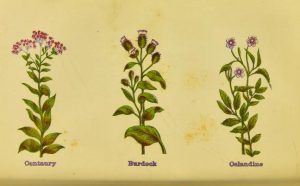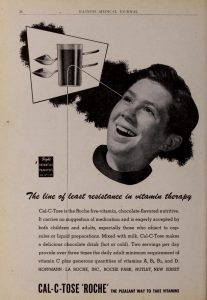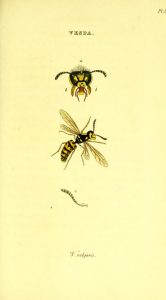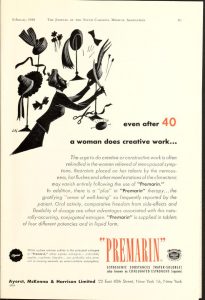Primary Source Sets
MHL Collections
Reference Shelves
Search Results for: )
The real history behind the look of “Wonder Woman”s Dr. Poison
~Courtesy Michael Rhode, Archivist / Curator, US Navy BUMED Communications Directorate (M09B7) Office of Medical History
The new Wonder Woman movie has a long-standing villain named Dr. Poison who is developing a super poison gas to reverse Germany’s imminent loss of the Great War. Elena Anaya’s character is shown with a porcelain mask over the lower quadrant of the left side of her face… Read the rest of Michael’s post here!
Heart’s Ease
~Courtesy Chrissie Perella and Beth Lander, MLS, College Librarian, Historical Medical Library.
What is a recipe? Is it instructions from which one can prepare a meal, a snack, a dessert? Or is it how to mix the best cocktail? Or how to cure acne? Or how to care for a bee sting? What other knowledge does one need to properly take advantage of the advice in a recipe? Recipes found in medical books are no different than ones found in food cookbooks; it’s just that the desired outcome is different than a crowd-pleasing cake.
The Historical Medical Library holds over 20 manuscript recipe (or “receipt”) books, dating from the 17thcentury up through the early 20th century. The majority of our recipe books are medical in nature, but many include food, drink, and household cleaning recipes as well. I’ve even seen recipes for ink in a couple of our 19th century books.
However, the recipe book I’ve chosen to look at for The Recipes Project’s virtual conversation does not contain any ‘extras’ – it is filled with strictly medicinal concoctions. MSS 2/258 (Lancaster County recipe book) is dated to circa 1854 and attributed to an unknown physician from Lancaster County, Pennsylvania. I chose this particular book because I found it interesting that no food, drink, or household cleaning recipes are included. Other unusual features are a table of weights; a conversion table for liquid measures; a summary of “Doses of medicines for the different ages;” a chart of pulse rates, categorized by age; and my favorite, “The regulation of doses of Laudanum for Children.”
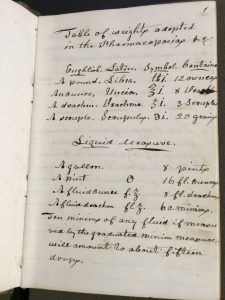
“Table of weights adopted by the Pharmacopoeias” and table of “Liquid measure.”
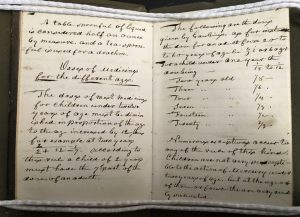
“Doses of medicines for the different ages”
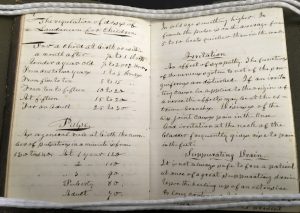
“The regulation of doses of Laudanum for Children” and “Pulse.”
The second section of MSS 2/258 reminds me strongly of student lecture notes. The next 5 pages include explanatory paragraphs about topics such as the circulatory system, irritation or inflammation, and “The Dangerous effect of bleeding.”
It is dangerous to bleed a person immediately after receiving a fall in such accidents a shock is given to the great nervous centres, which bleeding would augment or bring on the fate of the patient, if it be employed before reaction has taken place. D.mm.m.ii.164-5
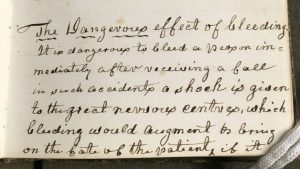
The Dangerous effect of bleeding.
Following the notes are recipes from both botanical and eclectic medical sources, which are often cited. One of my favorite citations is for a recipe for plasters: “This is the recipe of the plaster so long kept secret and remaining in the family of Doctor and Mrs. Carpenter.”
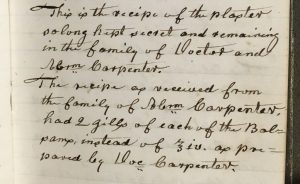
One has to wonder how our physician was able to get the secret plaster recipe from Dr. Carpenter. Another recipe in the book caught my eye because of its name: “Heart’s Ease.” I was curious to see whether this was some sort of tonic or tea, and if it was for what we may term depression/heartache/etc. I found some familiar ingredients (not ALL uses are enumerated here): valerian, used for insomnia as well as depression and conditions related to stress; saffron, for insomnia and depression; bergamot, used in aromatherapy to reduce anxiety; and the all-powerful lavender, useful for insomnia, depression, anxiety, and fatigue. Surprisingly, aloe
s socotrine is listed; it is described in Boericke’s Materia Medica (1901) as
An excellent remedy to aid in re-establishing physiological equilibrium after much dosing, where disease and drug symptoms are much mixed. There is no remedy richer in symptoms of portal congestion and none that has given better clinical results, both for the primary pathological condition and secondary phenomena. Bad effects from sedentary life or habits. Especially suitable to lymphatic and hypochondriacal patients. The rectal symptoms usually determine the choice. Adapted to weary people, the aged, and phlegmatic, old beer-drinkers. Dissatisfied and angry about himself, alternating with lumbago. Heat internally and externally. Has been used successfully in the treatment of consumption by giving the pure juice.
Also listed is “Musk – best common” which is apparently good for stroke, coma, nerve problems, seizures (convulsions), heart pains, and sores.
Well, it was fairly clear to me that either calming and soothing tinctures, teas, and tonics have greatly changed over the past 150 years or so, or I was way off on what this concoction was used for. It turns out that “heart’s ease” is not meant to relieve anxiety, sadness, or anything like that, but for “the treatment of diseases of the heart palpitations.” The tincture is described as a “stimulating antispasmodic.” A stimulating antispasmodic works to prevent or calm spasms by stimulating the higher nervous system.
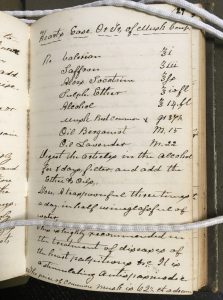
Recipes like the one above, and recipe books like MSS 2/258, can tell us much about the time in which they were written – what ingredients were familiar and available to the author, what medical or natural philosophy books the author studied or referenced, what ailments were common or considered important to know how to treat, and sometimes even short case studies about the effectiveness of a particular treatment.
What I find most fascinating, perhaps, about many of the Library’s recipe books is that they are non-discriminatory when it comes to choosing recipes: a treatment for kidney stones will be followed by a recipe for roast mutton; something to stop the flux will be followed by hair tonic. But MSS 2/258 is different in that it includes only medical recipes. The nature of the book is more formal and less chatty than some in the collection: I’m thinking specifically of MSS 2/351, (Elizabeth Paschall Coates receipt book), which includes notes like this in recipes:
“Susannah Fowler an old Acquaintance of mine from her Childhood & a person of Good Reputation had a verry bad fellon Coming on her finger. . . this She Says was practised by a woman as a very Grate Secret I Dispersd one for our Girl Rose in 6 or 8 Dressings. . .”
While we know a bit about Elizabeth Paschall Coates, we know nothing about our Lancaster County physician. Where did he attend medical school? Did he have his own practice or did he work in a hospital? The way his recipe book is laid out and the contents it includes suggest that he was a meticulous, thorough person, and therefore was probably a decent doctor. Perhaps he didn’t include food, drink, or household cleaning recipes because he liked everything well organized and in its place – do recipes for bread, punches, or inks belong with medicines?
Even in strictly medical recipe books one will find many answers to the question “What is a recipe?” and perhaps more questions, as well.
Images from the Library
From Illinois Medical Journal (1944).
New to the MHL!
In case you haven’t been keeping up, here are some of the latest things to come into our collection:
- Thousands of Medical Officer of Health reports from all over the UK (19th and 20th centuries)
- Hygie militaire, ou l’art de guérir aux armées, poëme en quatre chants; suivi des loisirs d’un militaire dans la campagne de 1809 (1819)
- A blind man’s offering (1850)
- The Institutions of the Practice of Medicine Delivered in a Course of Lectures by Jo. Baptis Burserius de Kanifeld (1806) (And don’t miss volume 2, volume 3, volume 4, and volume 5!)
- The Zincali; or, an account of the Gypsies of Spain. With an original collection of their songs and poetry (1842)
- Incidents of missionary enterprise… (1846)
See more of our latest additions right here! And you can subscribe to the RSS feed of our latest additions here.
State Medical Society Journal Digitization Project Wrapping Up
Our latest digitization project, state medical society journals, is in its last months. We’re working on the final report to the National Endowment for the Humanities (#SavetheNEH, by the way!) and the last few volumes are going into the collection.
There’s more than one way you can access the material. There is, of course, the main collection page on the Internet Archive, but we’re also working on a more detailed list by state and we hope to supplement this list with links to each journal title individually.
You will automatically search the state medical journals project as part of the main MHL collection if you use the IA search box from our main collection page and you can also use our own full-text search tool. Scroll down to “collections” and select “statemedicalsocietyjournals” to use all the power of our search tool for this body of material.
Images from the Library
From William Wood’s Illustrations of the Linnaean genera of insects (1821). (Check out the full book for beautiful illustrations of butterflies, dragonflies, and more!)
New York Academy of Medicine Library Launches New Digital Collections Website
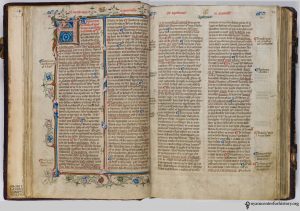 The New York Academy of Medicine Library announced
The New York Academy of Medicine Library announced
today the launch of its new digital collections and exhibits website, hosted on the open-source framework Islandora and accessible at http://digitalcollections.nyam.org/. The new site makes it easy for the public to access and explore highlights of the Library’s world-class historical collections in
the history of medicine and public health.
“The Academy is committed to enhancing access to our Library’s world-class collections through digitization,” said Academy President Jo Ivey Boufford, MD.
“With the launch of our new digital collections and exhibits website, users across
the globe will have access to an ever-growing number of important resources in the
history of medicine and public health.”
![]()
The website includes a glimpse into the Library’s rare and historical collections material. In one day, high-end photographer Ardon Bar-Hama, courtesy of George Blumenthal, took photos of a subset of the Library’s treasures, which are all accessible via the new website. Visitors interested in cookery can page through the Library’s Apicius manuscript with 500 Greek and Roman recipes from the 4th and 5th centuries. Other highlights includes beautiful anatomical images from Andreas Vesalius’s De Humani corporis Fabrica and striking botanicals like this skunk cabbage
(Symplocarpus Foetida) hand-colored plate from William P. C. Barton’s
Vegetable Materia Medica.
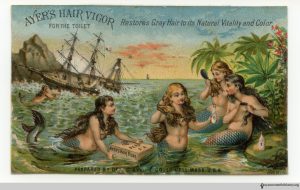 Also featured is The William H. Helfand Collection of Pharmaceutical Trade Cards, which contains approximately 300 colorful pharmaceutical trade cards produced in the U.S. and France between 1875 and 1895 that were used to advertise a wide range of goods in the nineteenth century. Such cards are now regarded as some of the
Also featured is The William H. Helfand Collection of Pharmaceutical Trade Cards, which contains approximately 300 colorful pharmaceutical trade cards produced in the U.S. and France between 1875 and 1895 that were used to advertise a wide range of goods in the nineteenth century. Such cards are now regarded as some of the
best source material for the study of advertising, technology and trade in the post-Civil War period.
“It is gratifying to digitize our materials and see them come to life with the launch,”
said Robin Naughton, PhD, Head of Digital for the Library. “Our digital collections and
exhibits website represent a bridge between the Academy Library’s collections and
the world as it intersects with the humanities and technology.”
The Library will continue to launch new digital collections and exhibits, including
“How to Pass Your O.W.L.’s at Hogwarts: A Prep Course,” which celebrates the 20th
anniversary of the publication of Harry Potter and the Philosopher’s Stone and will be
launched on June 26. Two other upcoming digital projects focus on the history of the
book: “Facendo Il Libro/Making the Book,” funded by the Gladys Krieble Delmas
Foundation, and “Biography of a Book,” funded by a National Endowment for the
Humanities Digital Projects for the Public grant.
About The New York Academy of Medicine Library
The Academy is home to one of the most significant historical libraries in medicine
and public health in the world, safeguarding the heritage of medicine to inform the
future of health. The Library is dedicated to building bridges among an
interdisciplinary community of scholars, educators, clinicians, and the general
public, and fills a unique role in the cultural and scholarly landscape of New York
City. Serving a diverse group of patrons—from historians and researchers to
documentary filmmakers to medical students and elementary school students—the
Academy collections serve to inform and inspire a variety of audiences from the
academic to the public at large.
Foundation for the History of Women in Medicine Fellowship Lecture: Gender and Risk Perception in the Development of Oral Contraceptives, 1940-1968
Thursday, June 15, 2017 – 5:30pm
Kate Grauvogel is the 2016-2017 Foundation for the History of Women in Medicine Fellow, Doctoral student in the History and Philosophy of Science and Medicine Department at Indiana University-Bloomington.
This lecture is sponsored by The Archives for Women in Medicine and the Women in Medicine Legacy Foundation.
Kate Grauvogel is an advanced doctoral student in the History and Philosophy of Science and Medicine Department at Indiana University-Bloomington. Broadly, her research interests include the history of women’s health, especially pathology and psychiatry in the nineteenth and twentieth centuries. Her current research focuses on women and experimentation in medicine, particularly the history of blood clotting disorders in reproductive-age women, and how physicians perceived the whole constellation of gender, reproduction, secretions, clots, and associated diseases.
Grauvogel’s dissertation is entitled “A gendered history of pathology: blood clots, women, and hormones in the nineteenth and twentieth centuries.” It argues that the bodies of women—whether as obstetric patients, cadavers, or sufferers of side-effects from birth-control pills—shaped pathological theory as well as understandings of the role of secretions (later identifiable as estrogens) in health and disease. It also explores the medical and cultural functions of the Pill in the twentieth century and its impact on women and their lives. In it, she hopes to show how nineteenth-century pathologists and twentieth-century physicians observed pregnant women and women on the birth control pill and gleaned important information from them, such as the idea that fluctuations in estrogens could lead to the formation of dangerous blood clots.
The project as a whole uses primary sources from France, England, and Germany. At the Countway, Grauvogel will add an American perspective from the Boston Hospital for Women Records, 1926–1983, The Free Hospital for Women Records, 1875–1975, the Boston Women’s Health Book Collective, The Leona Baumgartner Papers, 1830-1979, the Janet Ward McArthur Papers, 1939-2005, and other collections. She will be looking for cases of lying-in illnesses, including blood clotting, which will shed light on how pathologists thought about dangerous blood clots in women as the result of either pregnancy or the Pill. She hopes to emerge with a better grasp of the ailments doctors observed in women, as well as and how they described and thought about such ailments.
Waterhouse Room
Gordon Hall
Harvard Medical School
25 Shattuck Street, Boston MA
Reception begins at 5:00pm.
Free and open to the public. Registration is required. Register online now through Eventbrite or email us at ContactChom@hms.harvard.edu.
Images from the Library
From the Journal of the South Carolina Medical Association (1949).






